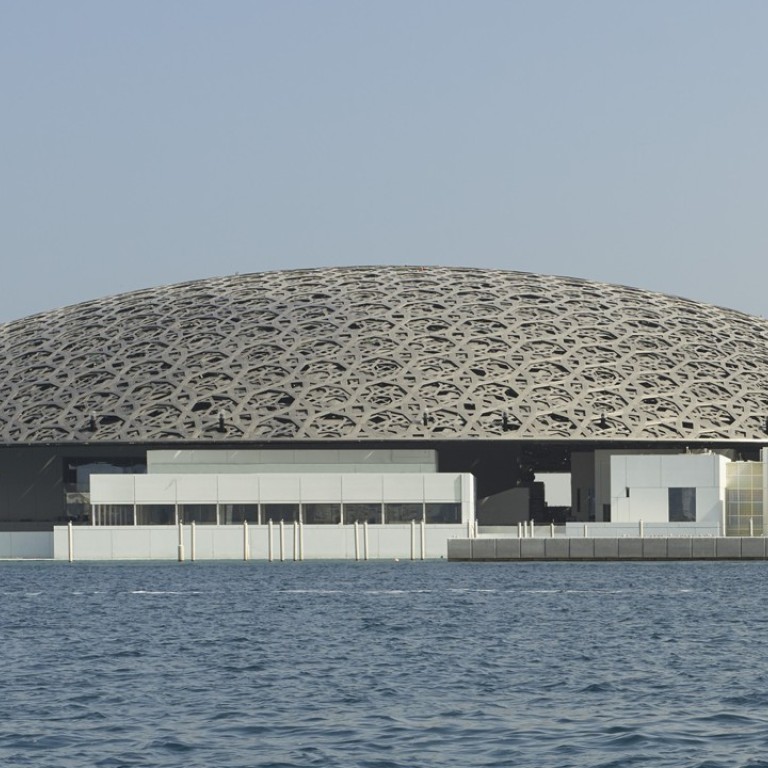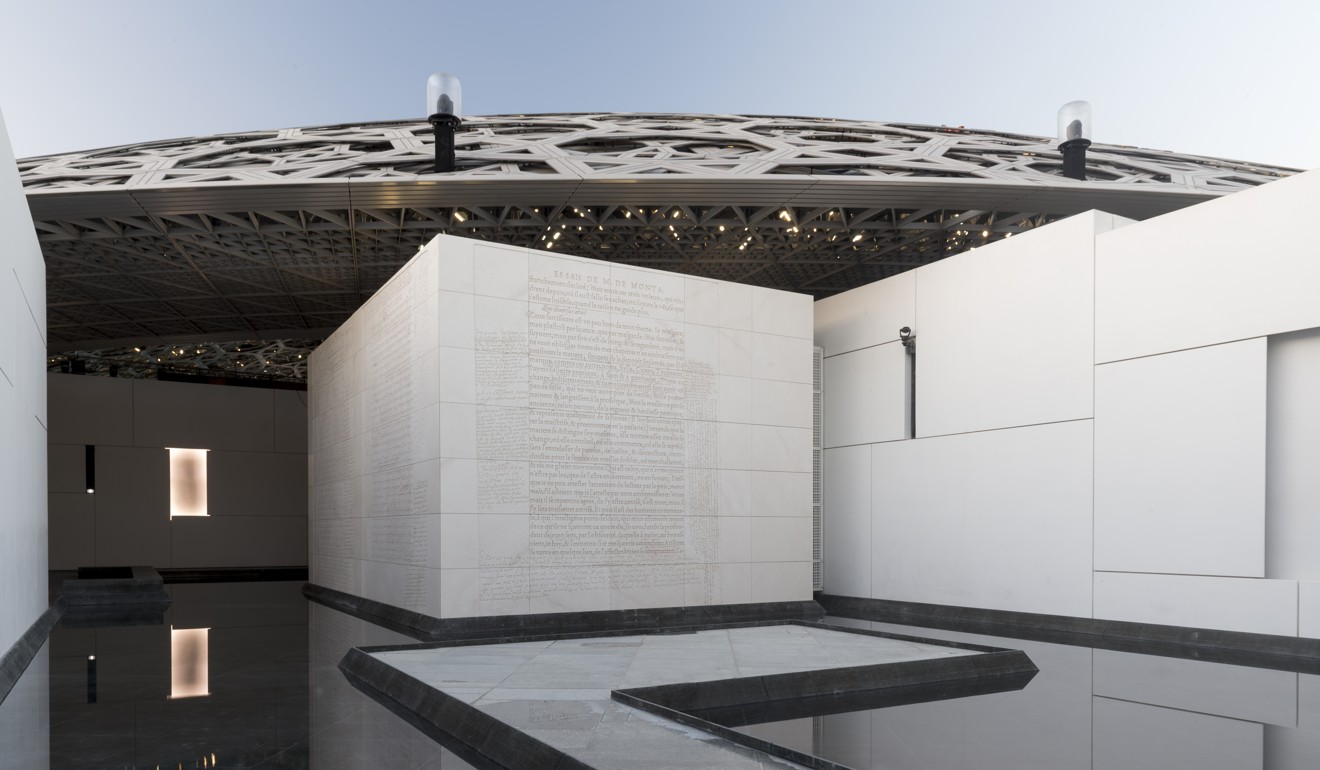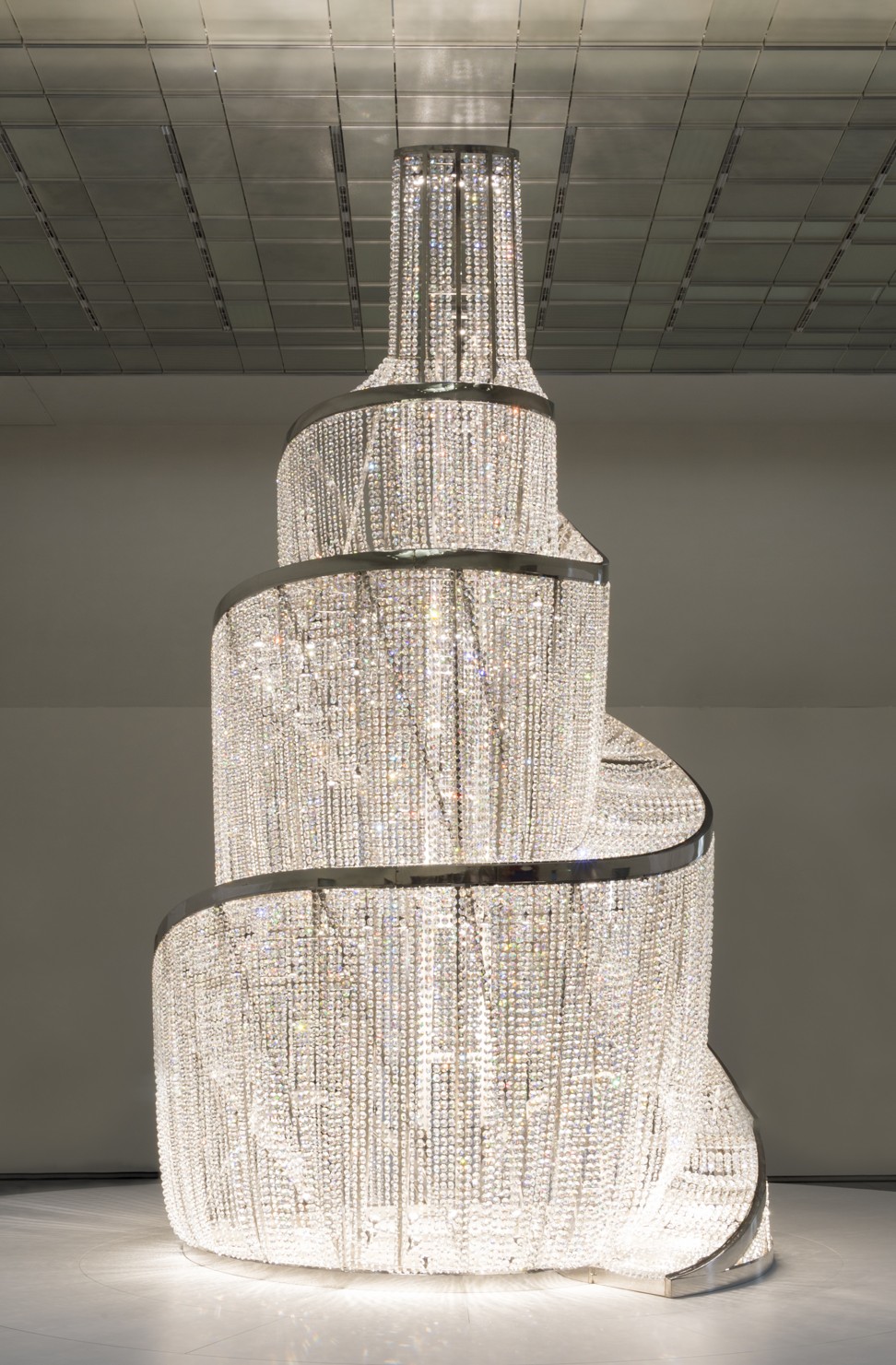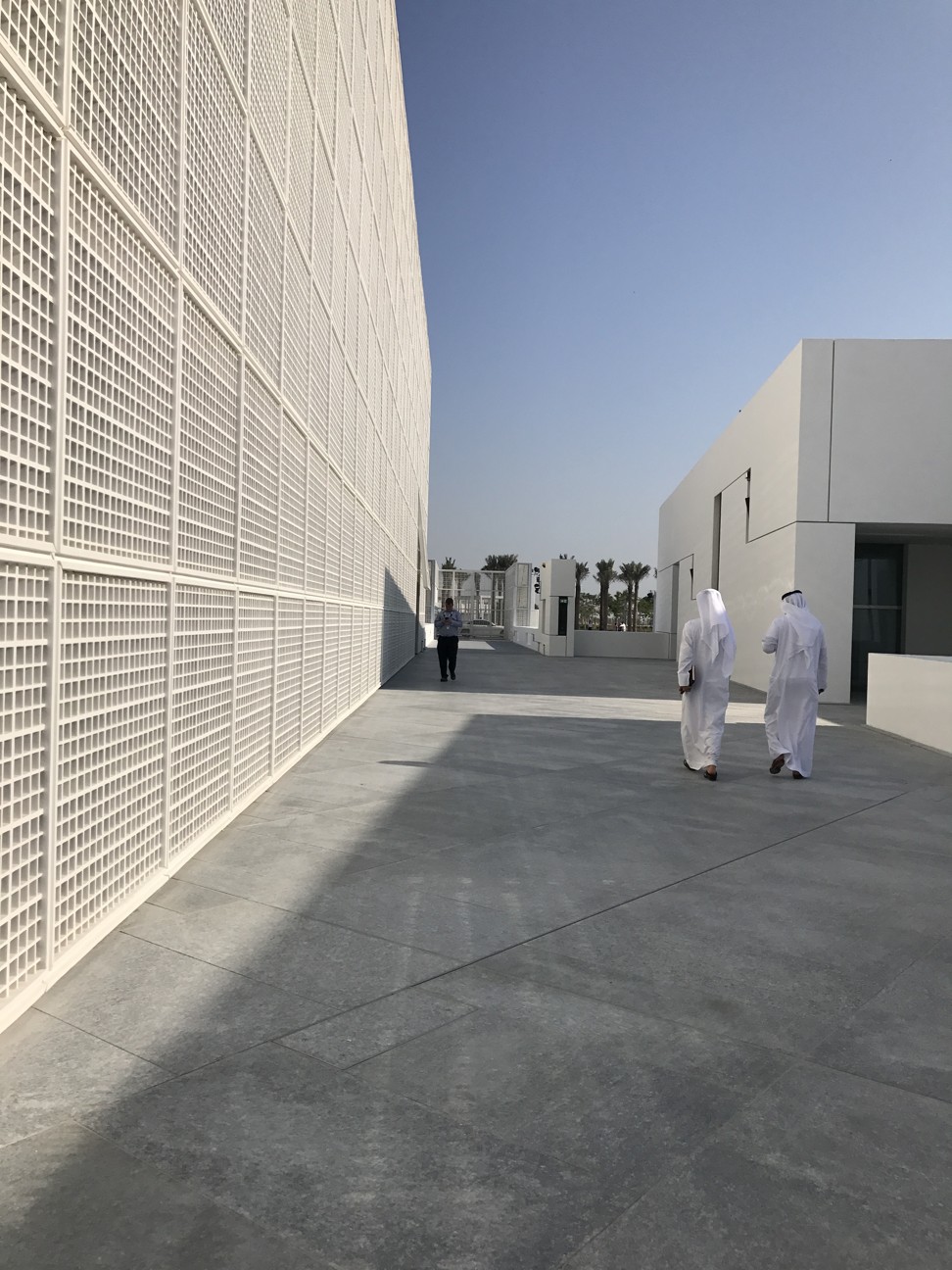
Louvre Abu Dhabi’s architect on what inspired its revolutionary design
Jean Nouvel created the ‘universal’ museum’s unique perforated dome and 21st century take on Arabic architecture. He explains how he sought to ‘translate and define the local culture’
Few modern-day museums are considered groundbreaking because of their design rather than their artworks, but the Louvre Abu Dhabi is a striking example.
Despite long delays and the exorbitant cost, reputedly in the region of €600 million (US$712 million), when the museum opened on November 11 it was widely seen as an architectural masterpiece, thanks in no small part to the instantly recognisable, futuristic dome that provides a protective cover for the complex of 55 galleries.
Louvre Abu Dhabi opens as a ‘bridge between civilisations’
The project was first conceived more than a decade ago during the Gulf’s oil boom, when the cash-rich Emiratis agreed a deal of US$1 billion plus with the French government, including a 30-year licence to use the Louvre name, rely on its expertise and borrow from its collection.
The agreement also opened the door to a larger collection of art through Agence France-Muséums, a relatively new organisation of France’s cultural institutions, which include the Pompidou Centre, the Musée Guimet and the Chateau de Versailles.

In 2006, however, none of this was envisaged when French architect Jean Nouvel was commissioned by the Abu Dhabi Tourism and Culture Authority to create a “classical museum of civilisation” alongside a collection of buildings to be designed by a who’s who of “starchitects”, including Norman Foster (whose design takes the shape of a racing falcon’s wing), a jumble of forms by Frank Gehry for the Guggenheim, and one of the shapely construction for which the late Zaha Hadid was renowned.
Fond of describing himself as “a contextual architect”, Nouvel, a Pritzker Prize winner, explains how the man-made patch of sand that the government planned to transform into a new cultural hub offered architectural inspiration.

“I saw sand, water, sky and the horizon … with the city on one side and the sea on the other,” he says, gesturing towards the sea and a jumble of nearby shiny skyscrapers.
“The museum has to belong to the civilisation that builds it, to its history and to its geography. This could not exist in Paris, Berlin or New York.”
Critical of designers who create statement buildings without considering the broader cultural setting, Paris-based Nouvel says: “It is catastrophic when buildings are parachuted in by international offices without any roots in a place. We must always be sensitive and contextual, even where there is no apparent context.”
The architect says he wanted to create a museum that would take the form of “a welcoming meeting place” that would “translate and define the local culture”, and so looked to Arabian architectural elements including a dome.
Louvre Abu Dhabi is unveiled to the world as monumental price tag remains secret
It was an inspired decision that could so easily have descended into cliché instead of the refined, sculptural steel mesh structure that hovers 30 metres above the sea.
“The dome came out of a desire to create a sense of protection, but also becomes a link that defines public territory,” Nouvel says.
It also operates as a functional cover. The complex geometry of eight layers of interlocking steel and aluminium creates more than 7,800 “stars” that filter sunlight, creating a microclimate and reducing the temperature by about five degrees Celsius.
Nouvel is especially pleased that the four struts supporting the 180-metre-diameter, 7,500-tonne dome are largely invisible. “Can you find them?” he asks with undisguised glee as we walked along one of the narrow paths between the art buildings leading onto a vast plaza.

It’s easy to become distracted by the building’s unexpectedly delicate geometric form, but happily Nouvel’s architectural touch continues inside with a group of fibre-reinforced concrete buildings and open spaces linked by paths and “streets” that feel like a village, its views framed to look out to sea.
According to the architect, the arrangement is designed to encourage visitors to wander between galleries and see “junctions” that suggest what can be seen.
There is also a children’s museum with specially curated artworks and workshops. No two galleries are alike, and spaces range from intimate to cavernous.
The museum has to belong to the civilisation that builds it, to its history and to its geography. This could not exist in Paris, Berlin or New York
“The cluster of structures and seawater canals are a deliberate nod to the Arab medina with the sense of discovery its smaller streets and squares offer,” Nouvel says. “It is conceived as a place to meet and talk about art and life in a context of total serenity.”
The 72-year-old architect also points to the mashrabiya – a traditional Arabian screen with a lattice pattern with openings that filters light but still allows a breeze to penetrate to help counter the desert climate – as a key design form reflected in walls throughout the project.
His role extended to the interiors, which feature his own minimalist black leather furniture designs, subtle lighting, graphics, and floors with stone mined from around the world. The beautifully lit spaces create a constantly evolving context from small rooms juxtaposed next to larger galleries delivering a high degree of flexibility for the museum’s curators to work with.
Nouvel also helped to select the works of art on show outside the galleries, dotted around the plazas and paths. These currently include the Italian artist Giuseppe Penone’s 16-metre-high bronze tree with mirrored leaves, and the American artist Jenny Holzer’s engravings of historic texts from three different world traditions on several of the walls of the museum. The oldest is a Mesopotamian clay tablet.

On the architectural side, there is a noticeable disconnect with the design of the entrance. As the first point of contact for visitors at the museum it is critically important, yet it appears that Nouvel was not responsible for the long covered corridor lined with a mashrabiya that leads from a sprawling open-air car park where drivers wait, engines running to keep the vehicles cool.
To be fair, the dramatic transformation of Abu Dhabi from a desert inhabited by nomadic tribes into a contemporary 21st century society has occurred in a little over 50 years, and a project of the scope and complexity of the Louvre Abu Dhabi is ambitious in any context.
The idea is for visitors to travel through time, room by room, seeing objects from different civilisations in the same rooms, dialoguing together
And then there is the art. Billed as a “universal museum” embracing ancient and contemporary works from as far afield as China, the Louvre Abu Dhabi is intended to present a “global story” of human cultural history. It also explores how art forms emerged in different parts of the world, spreading and influencing each other – a departure from traditional sequential presentations.
As anticipated, the Louvre Abu Dhabi’s inaugural display includes many works from the museum’s own fast-growing collection, as well as about 300 pieces lent by the Louvre and the Agence France-Muséums in what the Louvre’s president, Jean-Luc Martinez, described as “France’s greatest international cultural project of the 21st century, and no doubt one of the most ambitious cultural projects in the world”.

It is, however, notable that the inaugural exhibition features few provocative works, and nudes are limited to understated examples such as Auguste Rodin’s naked striding man, presented on an extremely tall column.
Nouvel worked closely with the curators to ensure that the art would present chronologically from prehistory to the modern day, displaying works from different countries and cultures side-by-side instead of geographically to highlight surprising similarities or influences.
The curatorial approach is intended to weave seemingly disparate objects together according to themes like universal religions.
“The idea is for visitors to travel through time, room by room, seeing objects from different civilisations in the same rooms, dialoguing together,” explains Louvre Abu Dhabi director, Manuel Rabaté.

Although this can be confusing at times, stand-out examples of when it works well include a striking display of a Koran, a Christian Bible and a rare Torah manuscript that contains the first three parts of the Hebrew Bible in its original stamped Moroccan leather box. Another is a Nouvel-designed angular glass cabinet presenting gold masks from Egypt, China and pre-Columbian South America.
Elsewhere there are spectacular bronzes, including an Oba head from the Kingdom of Benin (now Nigeria) dating to the first half of the 19th century, and a Degas dancer; sculptures such as a head of the Buddha from northern China carved out of white marble in the mid sixth century; and one of the earliest large representations of the human form – a plaster statue dating to around 6,500BC, found in Jordan. Notable paintings include Leonardo da Vinci’s portrait La belle ferronnière and Jacques-Louis David’s portrait of Napoleon.
Louvre Abu Dhabi to finally open its doors in November, with goal of making the world ‘a better place’ through culture
Chinese Artist Ai Weiwei’s 7-metre-high, chandelier-inspired crystal and steel Fountain of Light adds a touch of bling, although overall the contemporary works on display are noticeably less successful and feel slightly contrived. Minor criticisms aside, the collaboration between Abu Dhabi and Paris demonstrates a growing understanding that art is increasingly global.
The advantages of such a partnership do not just lie in creating a new cultural identity for the Emiratis, or paying the Louvre a great deal of money. They are also likely to make other museums – and hopefully their architects – rethink the question of what art is – and for whom.

